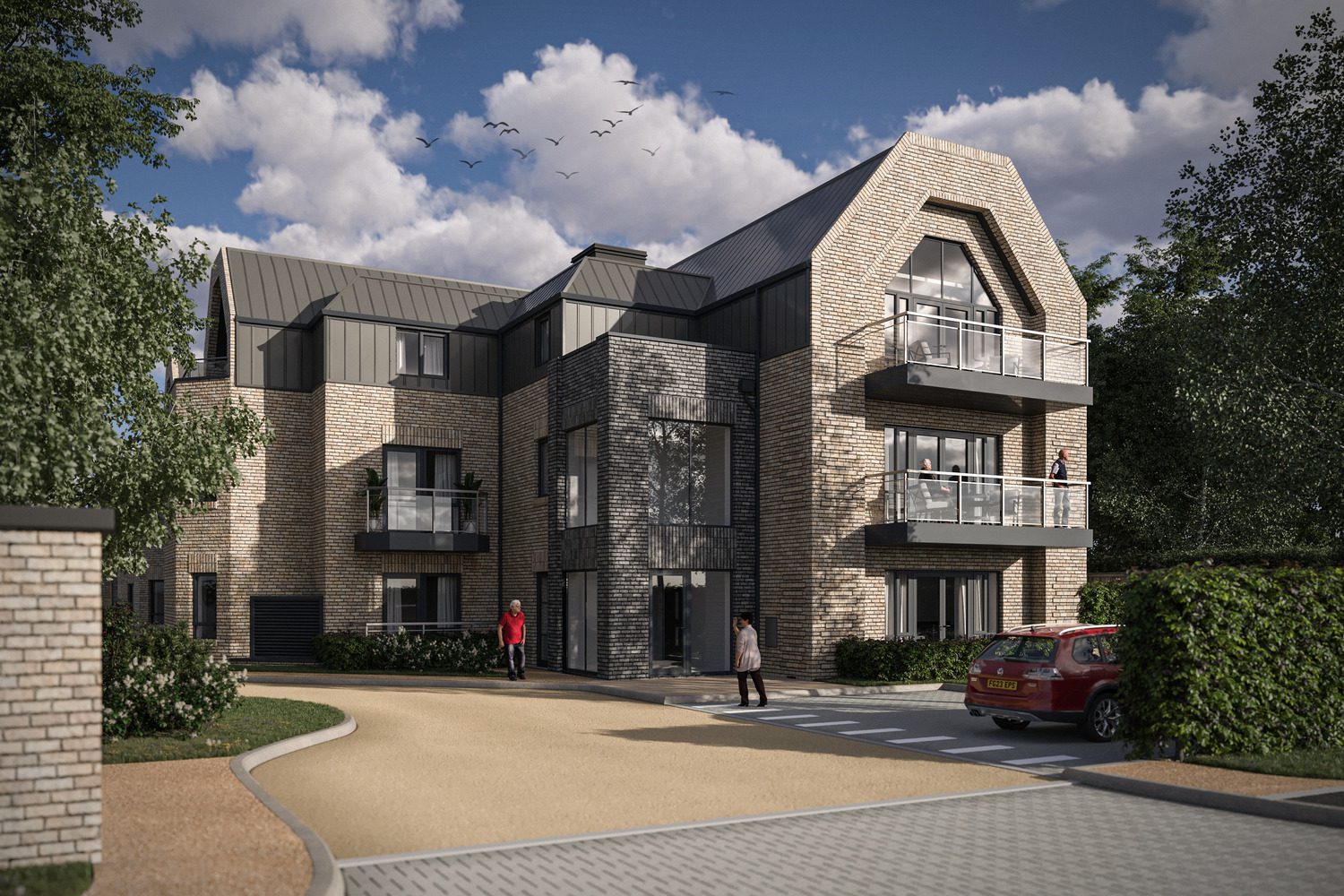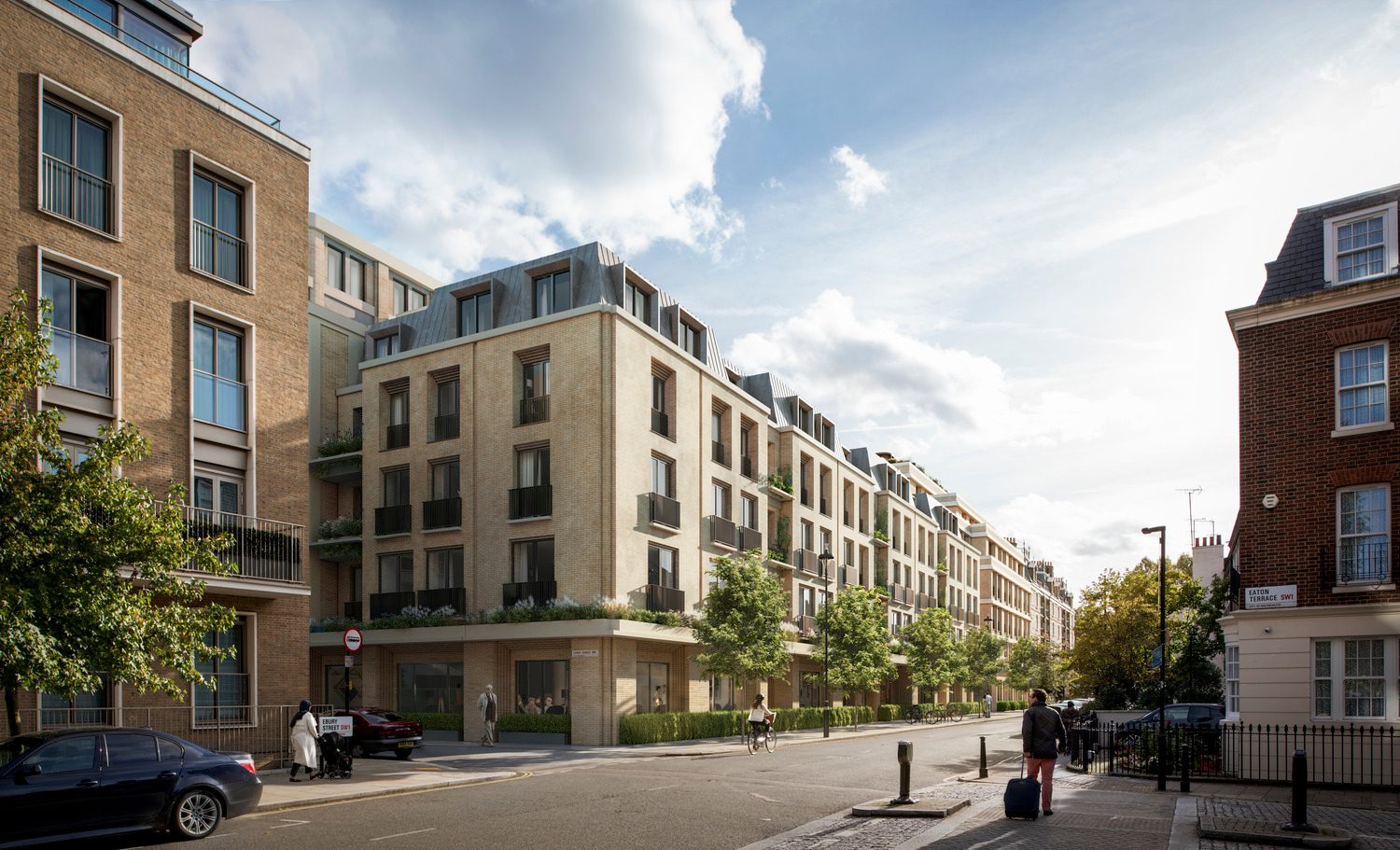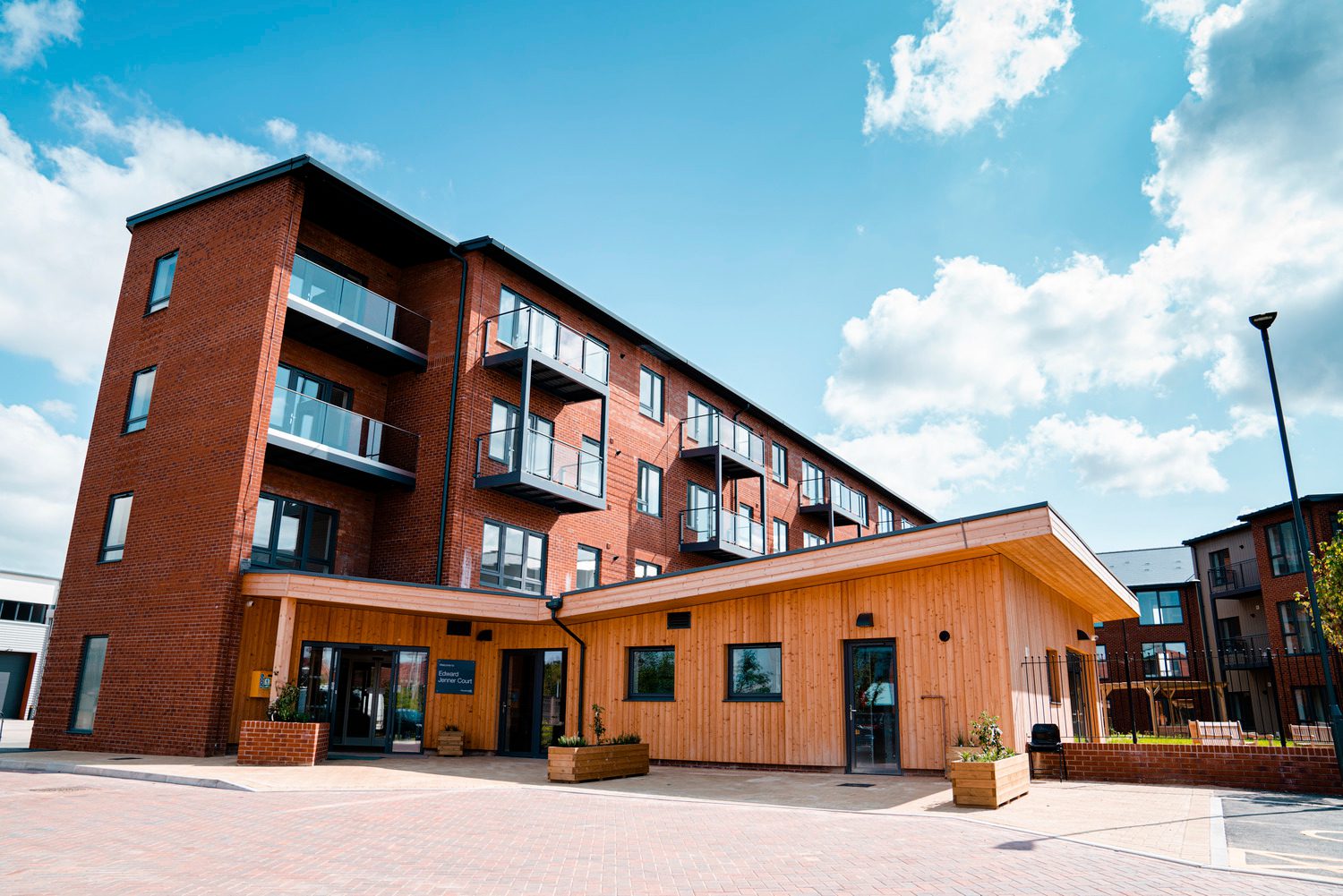By 2043, nearly one in four people in the UK will be over 65[1]. Yet while demand for age-appropriate housing is growing, supply remains heavily polarised between high-end retirement villages and subsidised affordable housing. The mid-market — older adults who are equity-rich but income-moderate — is underserved and represents a major untapped opportunity.
For construction and development partners, this means rethinking delivery models, design solutions, and investment strategies to create scalable, sustainable homes that balance quality, affordability and community.
Defining the Mid-Market
The mid-market typically serves older adults who:
- Own their homes outright or hold significant equity (£150k–£250k)
- Have moderate incomes and fall outside social housing thresholds
- Seek to downsize without compromising on lifestyle, location or independence
This demographic increasingly wants age-inclusive, future-proofed housing: properties that enable independence, encourage social interaction, and integrate support discreetly rather than institutionalised care.
This group is diverse but typically consists of those in their late 60s to early 80s, looking for a supportive environment that can help them to live a longer, healthier life. They may be looking to downsize from a larger family home to something more manageable, ideally in a community that offers security, social connection and proximity to amenities.
Enabling older homeowners to downsize into well-designed later living schemes has wider systemic benefits. Each move can free up a larger family home, helping to rebalance housing supply across generations. In this way, later living should not be seen in isolation, but as a vital part of the solution to the UK’s chronic housing shortage — unlocking movement throughout the housing chain and supporting access to more affordable homes further down the ladder.
The Scale of Demand
The scale of mid-market demand is significant. According to the Centre for Ageing Better, over half of over-65s live in homes that do not meet accessibility standards and many live in properties that are too large for their current needs[2]. At the same time, research shows that many older adults would consider moving if suitable, appealing housing were available.
According to the Older People’s Housing Taskforce report[3] which came out last year, they define the mid-market as “older people in the UK with equity in their homes ranging from £150,000 to £250,000”, and they estimated this makes up 25% of the Later Living market.
Savills[4] reports that the UK currently delivers around 4,000 new senior-living homes annually, with market penetration of specialist later living still at just 1% of the over 65 population, far behind mature markets in the US, New Zealand and Australia. If the UK were to reach a 5% penetration—closer to those countries—this would require growth to approximately 415,000 homes, highlighting the substantial scope for market expansion. And the mid-market is estimated to be about 15% of that market.[5]
Yet the market continues to deliver far below this level, partly due to supply-side challenges and partly because the specific needs of this cohort are not always well understood.
“The UK later living sector is at an inflection point. Demand for quality, age-appropriate housing is rising sharply, yet the mid-market remains underserved. By combining thoughtful design, modern construction methods and innovative funding models, we can unlock viable solutions that support independent living, social connection and long-term community value, while also helping to release larger homes back into the market and ease wider housing pressures.”
Barriers to Supply
So why is the mid-market so difficult to deliver? There are multiple intersecting barriers.
- Planning and Regulatory Delays - Planning remains a significant constraint on delivery. The introduction of the Building Safety Act has led to delays of up to nine months for Gateway approvals in some cases[6], extending and adding greater uncertainty to the development timeline. For the Later Living sector, where programme certainty underpins cost control and sales viability, such delays can have a significant impact on both project feasibility and investor confidence.
- Rising Construction Costs - Construction cost inflation since COVID-19 and the Russia/Ukraine war has compounded viability challenges, particularly for mid-market schemes. In many cases, elevated build costs, driven by material price volatility, labour shortages and energy inflation, have eroded already-tight margins. When paired with high land values, developers often struggle to make mid-market schemes stack up financially, especially in suburban or semi-urban areas where demand is strong, but price points cannot support premium-level returns.
- Policy Gaps - Lack of policy clarity and incentives has hindered investment. Unlike affordable housing, mid-market later living does not benefit from government subsidy or planning levers such as Section 106. This leaves developers reliant on private capital and exposed to greater market risk.
- Consumer Perception - Many older adults are unsure about what they truly want or need from later living developments. While terms like “retirement” or “senior living” can deter prospective residents who value their independence, the underlying requirement for accessible care and support is often still present. This places the onus on developers to create aspirational, lifestyle-led environments that offer discreet but effective care provision—enabling residents to maintain autonomy while futureproofing their wellbeing needs.
Design and Construction Solutions
Despite these challenges, there is growing recognition within the construction sector that mid-market later living can be both viable and impactful with the right delivery model.
The foundation is good design. Homes must be flexible, attractive and futureproofed, incorporating features such as step-free access, wider doorways, walk-in showers and a flexible care offering.
Case Study: Christ Church Apartments – assisted living apartments built to make day-to-day living easier.

© Birchgrove
There is broad recognition that the Later Living sector would benefit from more standardised design approaches, particularly in defining optimal unit sizes and amenity provision to enhance efficiency and affordability. Off-site construction and modern methods of construction (MMC) could play a key role in this evolution. By adopting factory-based manufacturing and repeatable components, developers can reduce programme durations, lower costs and improve build quality. Modular housing potentially offers a flexible and efficient route to delivering smaller-scale schemes that can be sensitively integrated into local settings. Mid-market buyers expect quality and sustainability, so build standards must be high. Energy-efficient heating and cooling, low running costs and integration of smart home technology are increasingly non-negotiable. Design also needs to support social connection, with communal areas, shared gardens and walkable layouts.
Creating Community and Place
One of the critical success factors in later living is the creation of community. This means going beyond the home to consider placemaking.
Developments must be embedded in accessible, connected locations — near shops, cafes, transport links and health services. A sense of walkability and safety is essential. Many successful schemes also include on-site amenities such as communal lounges, fitness studios, or hobby rooms which help residents form social bonds and maintain an active lifestyle.
Bringing the outside in has also been successful when integrating developments with the local community, whether that be through shared community spaces that can be hired out to local schools or community groups, or an F&B offer that is open to the local public.
Designing for intergenerational interaction is another growing trend. Some mid-market schemes are co-located with nurseries or libraries, while others feature open-access community facilities that foster exchange between residents and the wider public. These features make schemes more acceptable to planning authorities and more attractive to buyers.
Case Study: Cundy Street Quarter – 2.4 acre redevelopment delivering affordable homes, senior living housing and open market homes in energy efficient buildings.

© Grant Smith, 2019
Ultimately, community cannot be engineered solely through bricks and mortar. Good management and resident involvement are key to creating places where people feel they belong. But good design and construction can enable the conditions for those communities to flourish.
Policy, Partnerships and Procurement
Unlocking the mid-market opportunity will require coordinated effort across the public and private sectors.
Local authorities have a critical role to play in identifying suitable sites, offering policy support and working with housing associations and developers to bring forward mixed-tenure schemes. Land release and planning flexibility will be essential to improving viability.
Some housing associations are beginning to explore the mid-market as a way of cross-subsidising their affordable housing offer. There may also be a role for shared ownership or rent-to-buy models, which can broaden access to age-appropriate homes.
Case Study: Edward Jenner Court – a new Extra Care development with apartments, affordable rental and shared ownership.

© Ben Hughes
Innovative procurement routes can also help. Frameworks that reward social value, quality of life outcomes and long-term stewardship — rather than lowest cost — are more likely to result in developments that meet the nuanced needs of the mid-market.
“Delivering mid-market later living schemes at scale requires a fundamental shift in approach. Rising construction costs, complex planning frameworks and the need for high-quality, sustainable design make collaboration essential. We are helping clients navigate these challenges to deliver schemes that balance affordability with aspiration.”
Key Client Takeaways
The mid-market Later Living sector presents both a compelling opportunity and a critical challenge for the UK housing market. To unlock its potential, several shifts are required including clearer definitions and data to support investment and policy decisions, a more strategic approach to public land release and a cultural recognition of what later living can offer—one that combines lifestyle and community with care that doesn’t hinder independence.
For clients considering entry into this space, success will hinge on five key factors:
- Design with Purpose - Create homes that are future-proofed, universally accessible and attuned to the expectations of a generation that values independence, quality and lifestyle.
- Build Smarter - Embrace modern methods of construction to improve speed, consistency and cost efficiency — all critical to delivering viable, scalable mid-market schemes.
- Create Community - Prioritise social infrastructure, walkable neighbourhoods and shared spaces that foster connection, wellbeing and a sense of belonging.
- Activate the Chain - Demonstrate how later living developments can help free up under-occupied family homes — supporting housing mobility and strengthening the case for local support.
- Partner Strategically - Collaborate with local authorities, housing associations and expert advisors to unlock land, de-risk delivery and align with wider housing and social value goals.
Mid-market later living is more than a product—it’s a foundation for a healthier, more equitable future. For those ready to act, the opportunity is clear: to build with intent, invest with impact and shape a new narrative around ageing in the UK.
“Successful later living developments are no longer just about providing homes — they’re about creating vibrant, connected communities. By placing social value, wellbeing and inclusivity at the heart of design and delivery, we can create environments where people genuinely thrive.”
How G&T Can Help
At G&T, we are working with developers, housing associations and investors to deliver innovative later living solutions — from early-stage feasibility and funding strategies to cost planning, procurement and project delivery.
By combining construction insight, policy understanding and delivery expertise, we help clients create sustainable, attractive homes that meet the needs of an ageing population and unlock long-term value.
Get in touch to discuss your Later Living projects.
References
- Housing an ageing population: a reading list - House of Commons Library
- Evidence about homes | Centre for Ageing Better
- https://www.gov.uk/government/publications/the-older-peoples-housing-taskforce-report
- Savills UK | Spotlight: UK Senior Living – The Inflection Point
- Untold Living’s Russell Jewell on why mid-market matters for UK later living sector | Property Week
- Nine month wait to get building safety sign-off for new builds, regulator admits | News | Building







